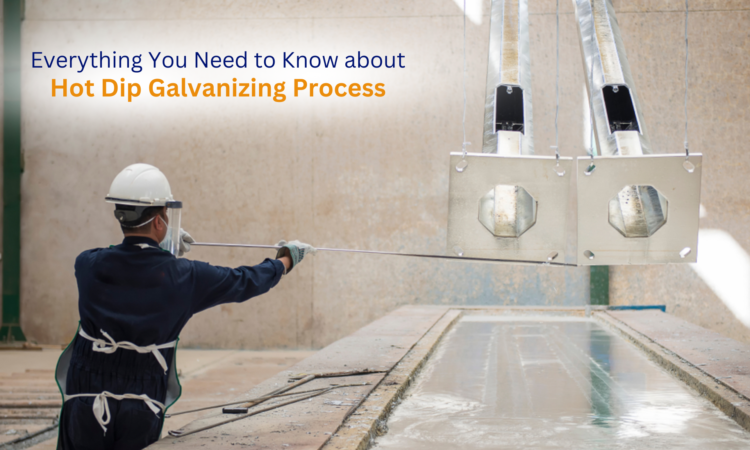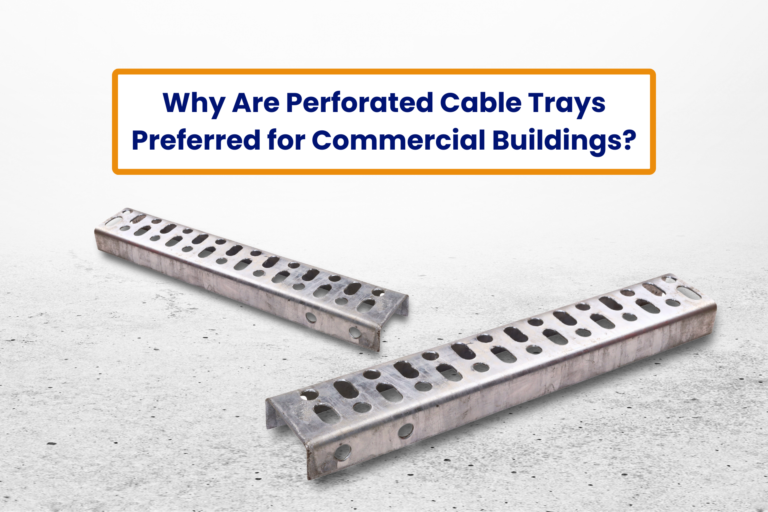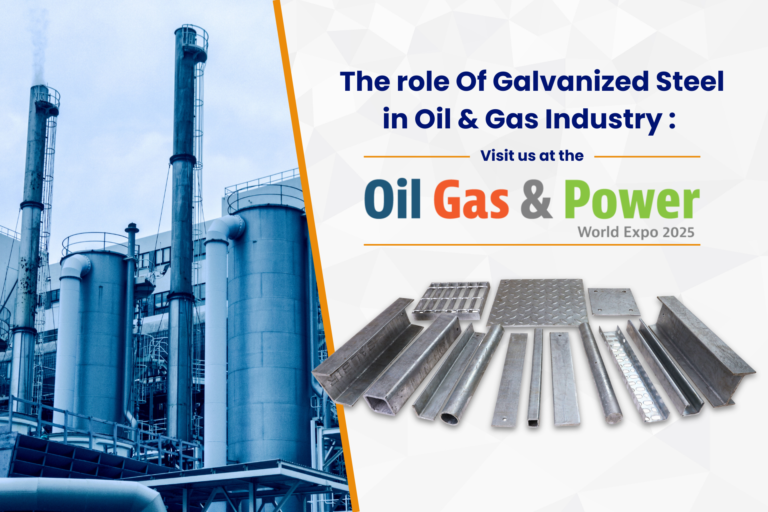Everything You Need to Know about Hot Dip Galvanizing Process
When iron in usable form is extracted from its ore, a fundamental tendency of nature is abruptly reversed. Unless protected, Iron & steel will react with natural elements & corrode in most environments, slowly returning to their natural state. Corrosion prevention is an essential factor in the economic utilization of steel. Hot Dip Galvanizing Provides ideal corrosion protection which no other coating can match considering the low initial cost, inspect ability for coating quality, durability, adhesion & resistance to mechanical damage. Galvanizing slows down the corrosion rate considerably.
The Process of Hot- Dip Galvanizing envisages the following major operations.
1. DEGREASING:
The Material to be galvanized is cleaned in Acid-Base solution to remove traces of oil & grease.
2. RINSING:
The pickling material is washed in running water to remove any traces of acid (acid salts).
3. PICKLING:
The degreased and cleaned material is preserved for some time in diluted hydrochloric acid to remove oxide films formed on the base metal/mill scale etc. Material is preserved in the pickling tank according to the intensity of rust.
4. RINSING:
Picking material is subjected to washing in running water by removing traces of acid. (acid salts)
5. FLUXING:
The degreased and pickled material is dipped in a fluxing solution of Zinc chloride/Ammonium chloride to have an activated layer for proper alloy formation of zinc with the base metal.
6. PRE-HEATING: Dryer pit
The pre-fluxed material is pre-heated to a temperature of about 40-700C for demoistarization before dipping it in the zinc bath which helps in avoiding splashing/spurting of zinc.
7. GALVANIZING:
Preheated base metal is coated with the molten zinc maintained at required temperature (450º to 4600C) & kept in the bath depending on the thickness of the base metal. The zinc forms an alloy with the base metal imparting it a longer life as well as the other layer of superfluous zinc. The bath temperature is automatically controlled in order to maintain required Temperature.
8. QUENCHING:
The Galvanizing material is cooled by quenching in running water .
9. PASSIVATION:
The quenched material is passivated in dichromate solution to prevent zinc oxidation.
10. FINISHING:
Materials properly galvanized are finished by cleaning, brushing, filing, etc to make sure about the quality of materials devoid of any physical defects.
Why is Galvanizing Important?
Galvanizing significantly improves the lifespan and durability of metal components, making it a preferred choice for industries like construction, solar energy, and infrastructure.
Here's why it is crucial:
Galvanized Coating: Rust and environmental corrosion resistance
Low Maintenance: Hot dip galvanized channels require less maintenance, that will bring down long-term costs.
Eco-friendly: The process is eco-friendly, the galvanized iron metal is recyclable.
Versatility: From earthing GI strips to perforated cable trays, galvanized products suit various applications.
Products Galvanized at Parco Engineers
At Parco Engineers, we specialize in galvanizing a wide range of products for industrial and commercial use, including:
Structural Frame: Galvanized beams, strut channels, and galvanized steel plates for constructions.
Electrical Frame: GI cable trays, ladder type cable trays, perforated cable trays for safe wire management.
Solar Energy Frames: Solar structures, solar panel structures for sustainable solutions.
Safety Support Frames: Handrails, and Galvanized round bars for industrial safety.
With decades of experience, we guarantee that every hot dip galvanized product meets international standards. From GI strips for earthing to base plates for structural support, we provide quality solutions.
Is Galvanizing Sustainable?
Sustainability is an inherent part of hot-dip galvanized steel, a message the galvanizing industry conveyed long before sustainable design was the buzzword. Hot-dip galvanizing is a tried and tested steel corrosion protection system which stands the test of time with a small footprint, economically and environmentally. Not only will hot-dip galvanized steel last for decades without maintenance but its two principal constituents, zinc and steel, are a natural, easily and abundantly available, and 100% recyclable resource, and hence hot-dip galvanized steel is an infinitely renewable building material. Utilizing galvanized steel metal ensures less natural resources are consumed, fewer emissions are produced, and cost of hot-dip galvanized steel will be less as compared to the others throughout the life of a project.
Sustainability is an inherent part of hot-dip galvanized steel, a message the galvanizing industry conveyed long before sustainable design was the buzzword. Hot-dip galvanizing is a tried and tested steel corrosion protection system which stands the test of time with a small footprint, economically and environmentally. Not only will hot-dip galvanized steel last for decades without maintenance but its two principal constituents, zinc and steel, are a natural, easily and abundantly available, and 100% recyclable resource, and hence hot-dip galvanized steel is an infinitely renewable building material. Utilizing galvanized steel metal ensures less natural resources are consumed, fewer emissions are produced, and cost of hot-dip galvanized steel will be less as compared to the others throughout the life of a project.
How Long Does HDG Last?
Hot-dip galvanizing (HDG) is often used to protect steel from corrosion in some of the most challenging environments one can imagine, yet it provides maintenance-free durability lasting for decades. Corrosion resistance of hot-dip galvanized metal is environment dependent but usually corrodes at a rate of 1/30 that of bare steel in the same environment. Measurements of actual consumption rate of the coating during the first few years of service make good data to project a conservative estimate for the remaining life to first maintenance, because as zinc corrosion products build on the surface, which, in most environments, are adherent and fairly insoluble, the corrosion rate often slows with time. The corrosion resistance of zinc coatings primarily depends on the thickness but can vary with the severity of environmental conditions. Each environment affects the hot-dip galvanizing in a different way based on a unique set of corrosion variables. The predictability of the lifetime of a coating is important to plan and budget for the maintenance needed.Whether exposed to the atmosphere, subjected to blazing UV rays, snow and/or other elements, immersed in water, embedded in soil or concrete, or one of many other environments, hot-dip galvanized steel can withstand all the various corrosive elements and fulfill the designed life.
Benefits of Hot Dip Galvanizing
Hot dip galvanized steel has achieved many benefits over various industries, they are as follows:
1. Corrosion Resistance
2. Durability and Long Life
3. Cost-Effective
4. Complete Coverage
5. Fast Application Process
6. Minimal Maintenance
7. Environmentally Friendly
8. Tough and Resistant to Damage
9. Aesthetic Appeal
10. Reliable and Proven Method
Galvanizing has been used for over a century as a trusted and reliable method for protecting steel. It’s a well-understood process, and performance is predictable in various environments.
Advantages of Parco Hot Dip Galvanized Products
Highly Resistant to Corrosion:
The protective galvanized coating, which is zinc-based, provides great resistance against the corrosion and weathering effects that may be exerted by the environment.
Long Service Life:
Flexibility:
Reliability:
Hot dip galvanizing is considered essential for protecting steel and iron against corrosion. All these factors make hot dip galvanized steel cost-efficient, durable, and friendly to the environment. Galvanized materials have been the first choice for industries for decades of protection and minimum maintenance. Parco Engineers have emerged as the most recognizable player in India for the hot dip galvanized products. Their contribution to infrastructure projects, industrial applications, and technological advancement has immensely helped the industry. Parco develops quality, innovation, and the satisfaction of its customers and more than anything continues to be a trusted partner for businesses seeking durable and reliable galvanized steel solutions.




6 Replies to “EverythingYou Need to Know about Hot Dip GalvanizingProcess ”
Comments are closed.